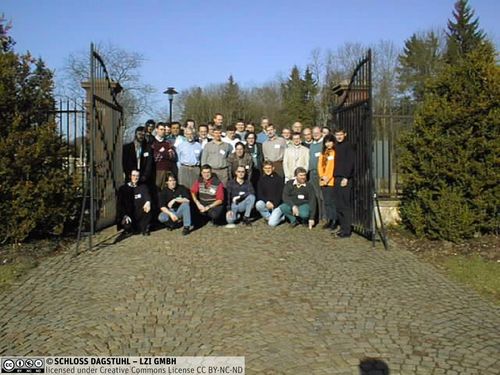Dagstuhl-Seminar 98081
Dynamically Reconfigurable Architectures
( 23. Feb – 27. Feb, 1998 )
Permalink
Organisatoren
- H. ElGindy (Newcastle, AUS)
- H. Schmeck (Karlsruhe)
- H. Schroeder (Loughborough)
Kontakt
Externe Veranstaltungsseite
The Dagstuhl Seminar on "Dynamically Reconfigurable Architectures" brought together 40 participants from 8 different countries and from very diverse areas:
- "Algorithms/RMesh people" designing efficient algorithms for processor arrays with reconfigurable bus systems,
- "FPGA people" using field programmable gate arrays for fast and flexible prototyping and designing tools supporting hardware/software codesign,
- "Optical people" designing fascinating new microoptical systems for fast communication at incredible bandwidth.
All the 29 talks treated some aspect of dynamically reconfigurable architectures, some were survey talks giving an introduction into the different areas. "Dynamical reconfiguration" refers to reconfigurable interconnection systems, being used for "computing in space", and to reconfigurable logic cells or processing elements which can be programmed by look up tables (LUTs).
The talks emphasised that technological advances have opened up new ways of implementing complex systems in a way that blurred the barriers between hardware and software components development, and that existing design tools do not seem to be adequate for the necessary new design styles. For example, dynamically reconfigurable hardware allows to swap "soft cells" on demand in and out of hardware, requiring new 2-dimensional scheduling (or paging) strategies. It is even possible to let hardware evolve by itself, learning the required functions, or simulating biochemical processes. New advances in optical communication all of a sudden lead to feasible implementations of interconnection structures which so far had been seen as having only theoretical value.
The pleasant atmosphere of Schloß Dagstuhl was an important incentive for the lively interaction between the participants. We would like to thank all who contributed to the success of the seminar. Furthermore, we gratefully acknowledge the financial support by the TMR Program of the European Community.
- H. ElGindy (Newcastle, AUS)
- H. Schmeck (Karlsruhe)
- H. Schroeder (Loughborough)
Verwandte Seminare
- Dagstuhl-Seminar 00261: Dynamically Reconfigurable Architectures (2000-06-25 - 2000-06-30) (Details)
- Dagstuhl-Seminar 03301: Dynamically Reconfigurable Architectures (2003-07-20 - 2003-07-25) (Details)
- Dagstuhl-Seminar 06141: Dynamically Reconfigurable Architectures (2006-04-02 - 2006-04-07) (Details)
- Dagstuhl-Seminar 10281: Dynamically Reconfigurable Architectures (2010-07-11 - 2010-07-16) (Details)


